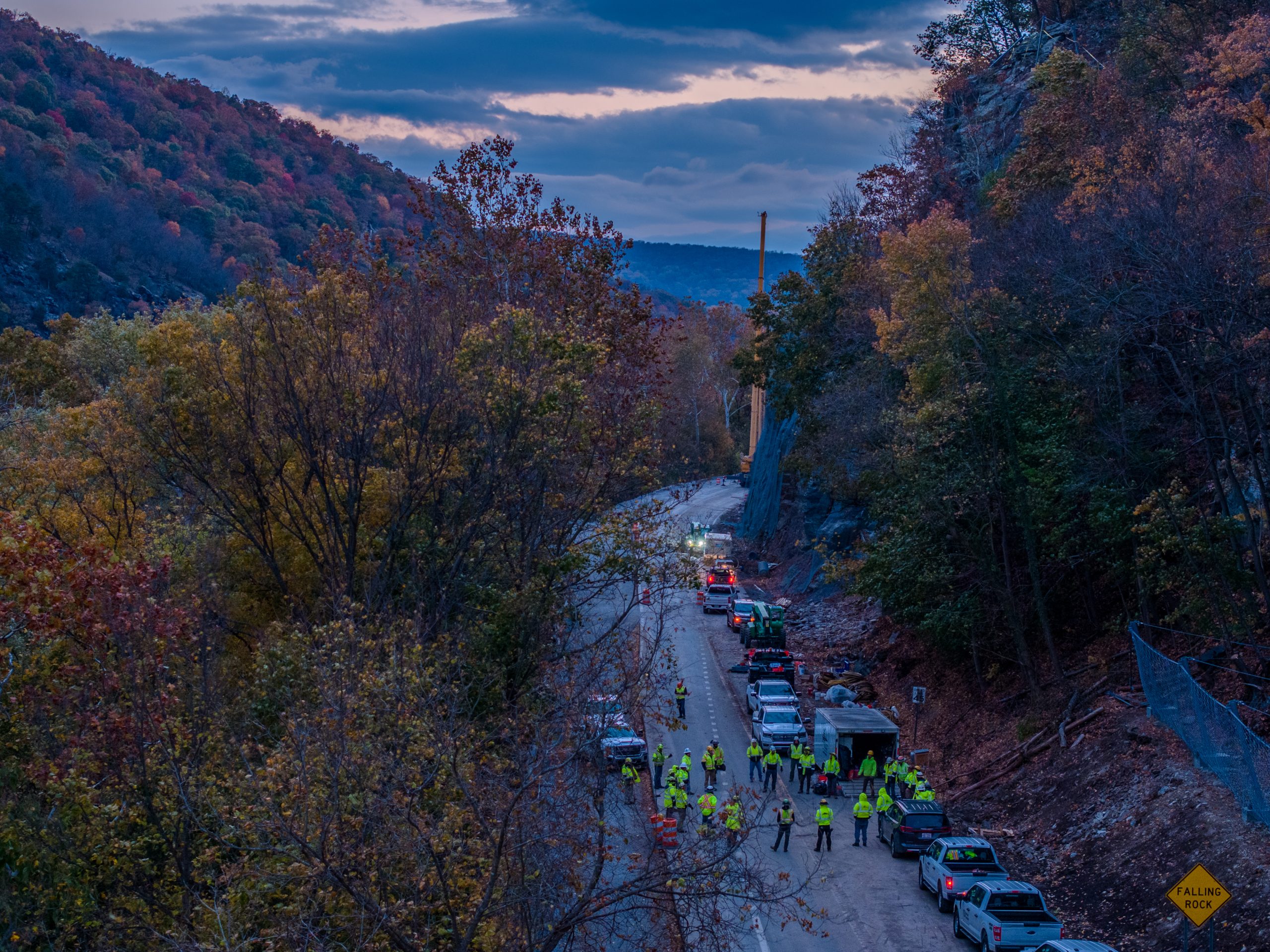
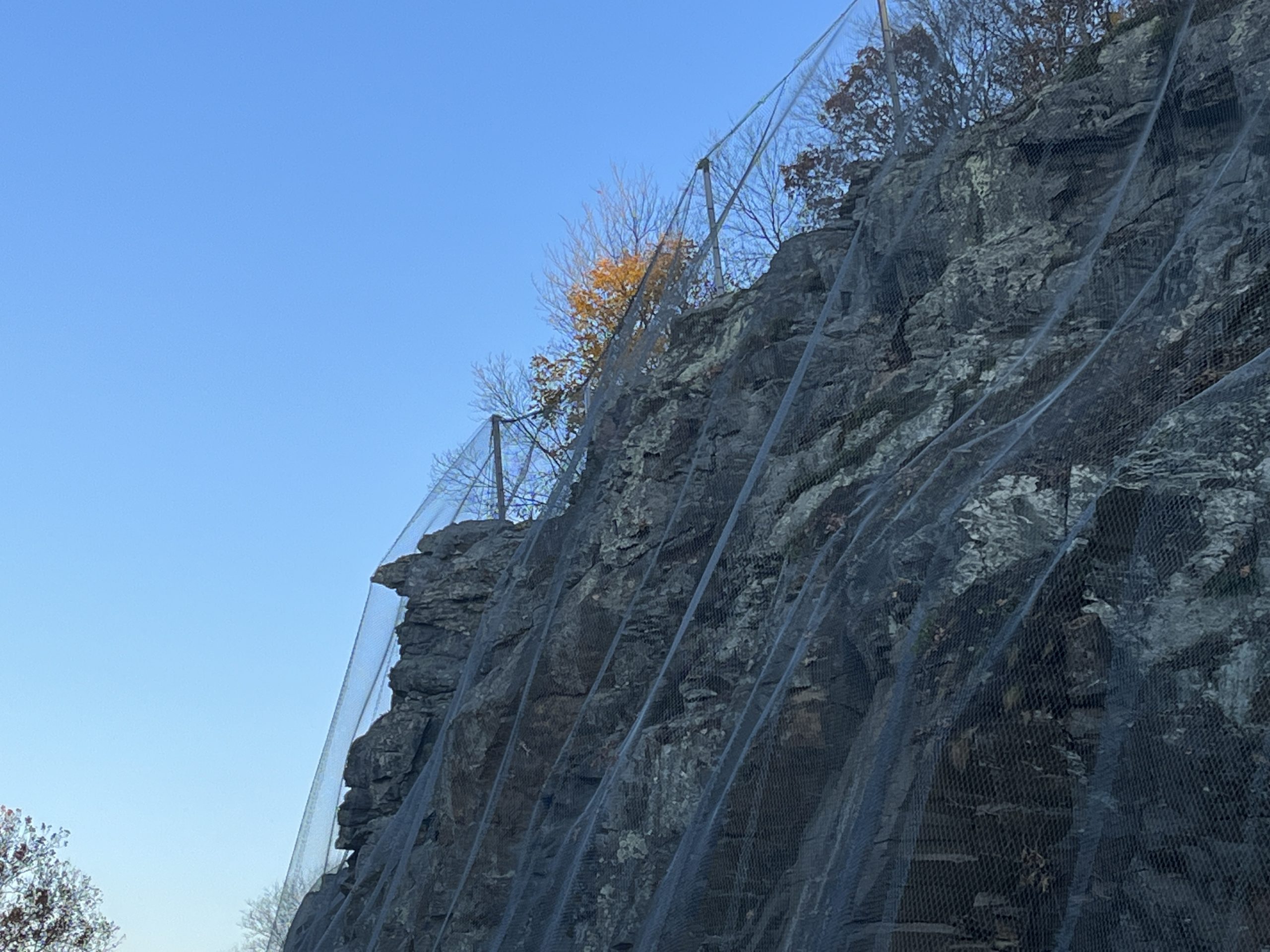
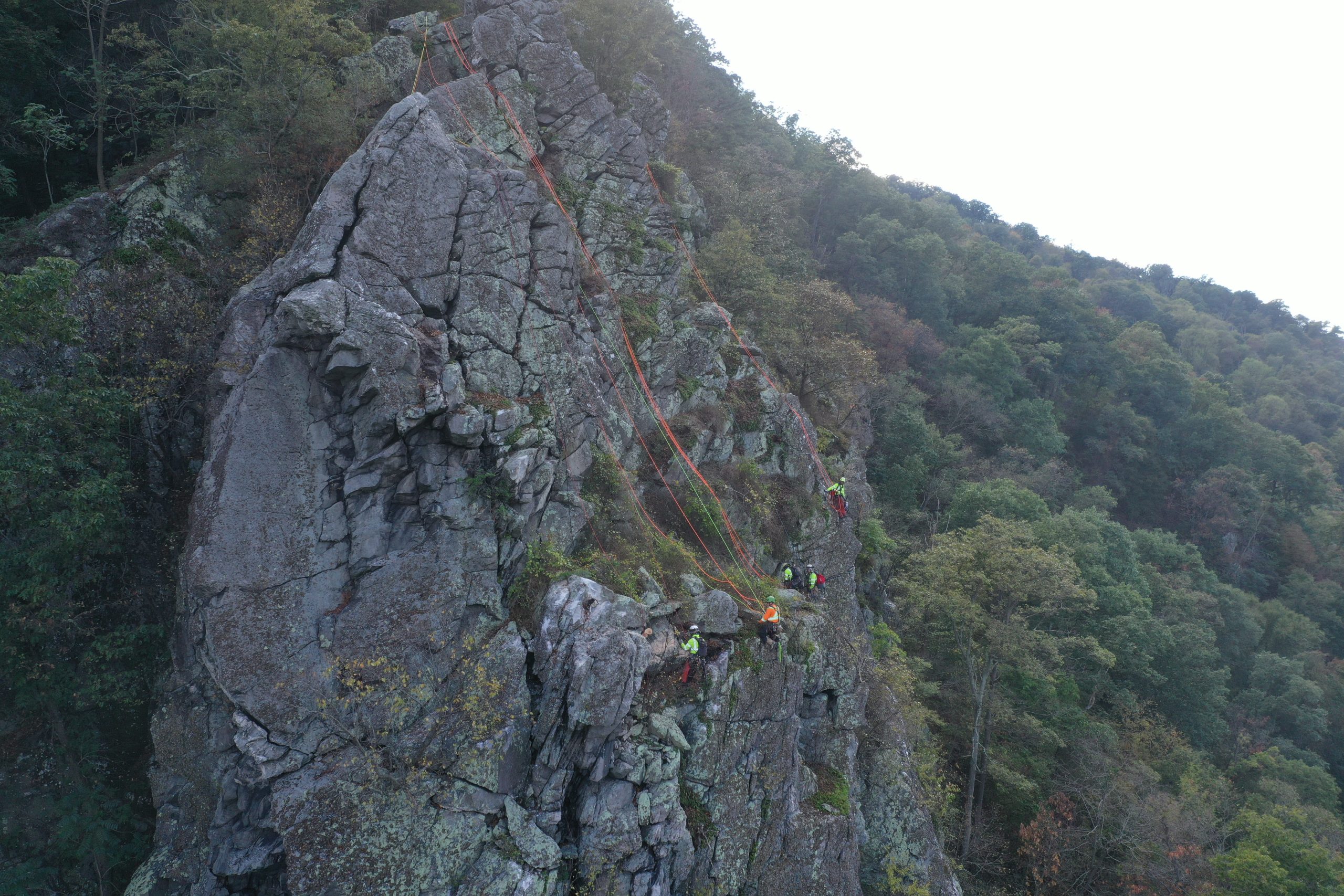
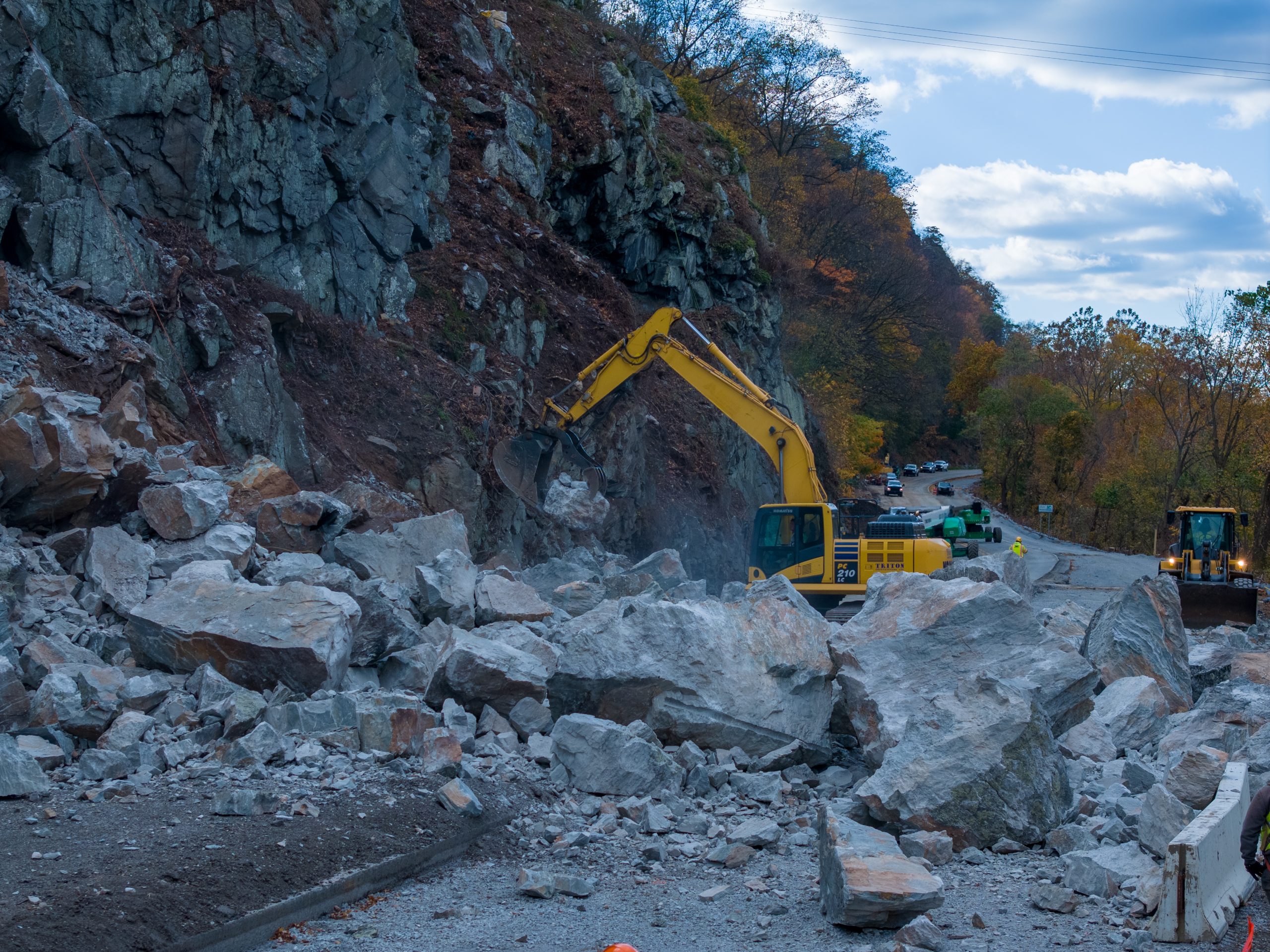
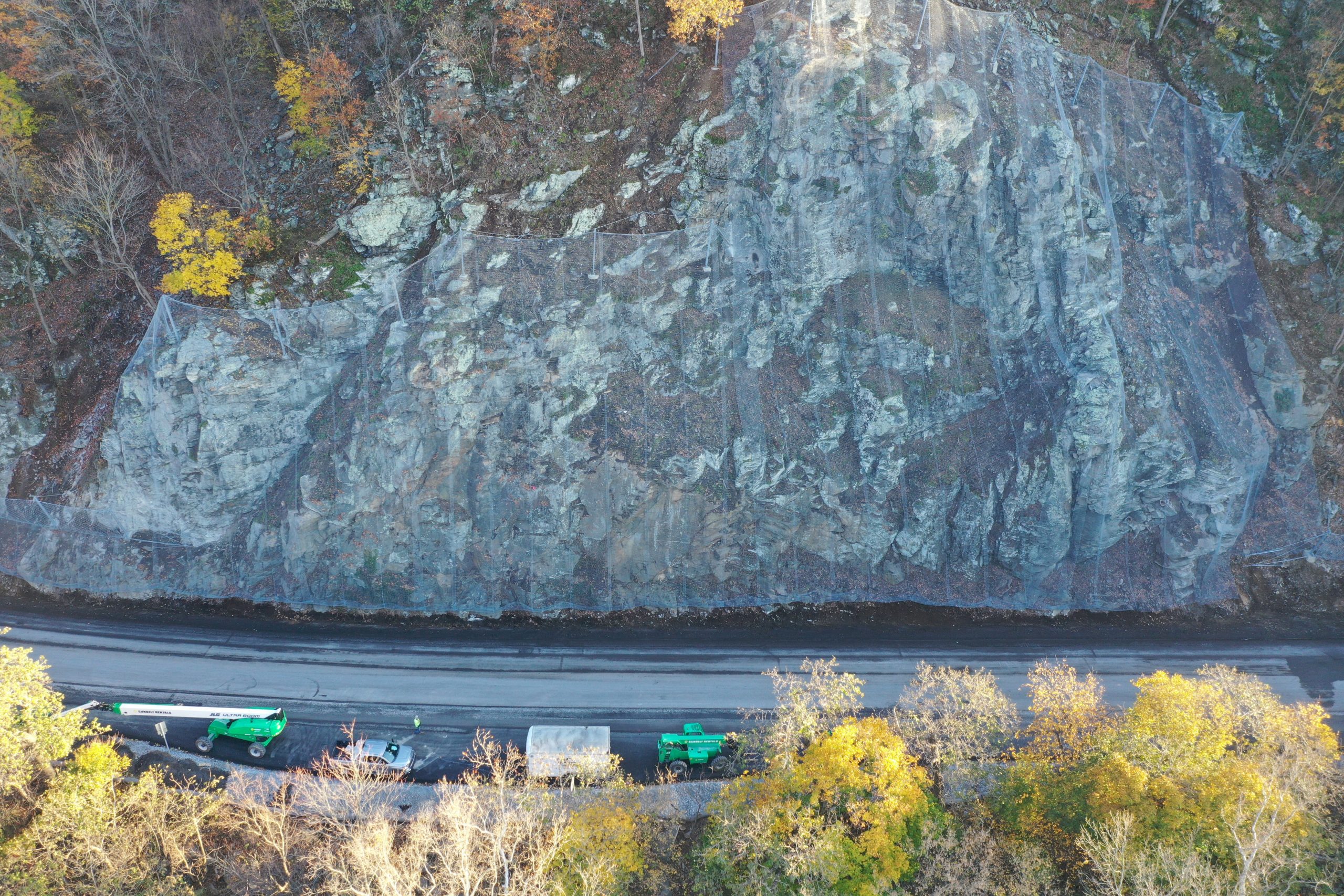
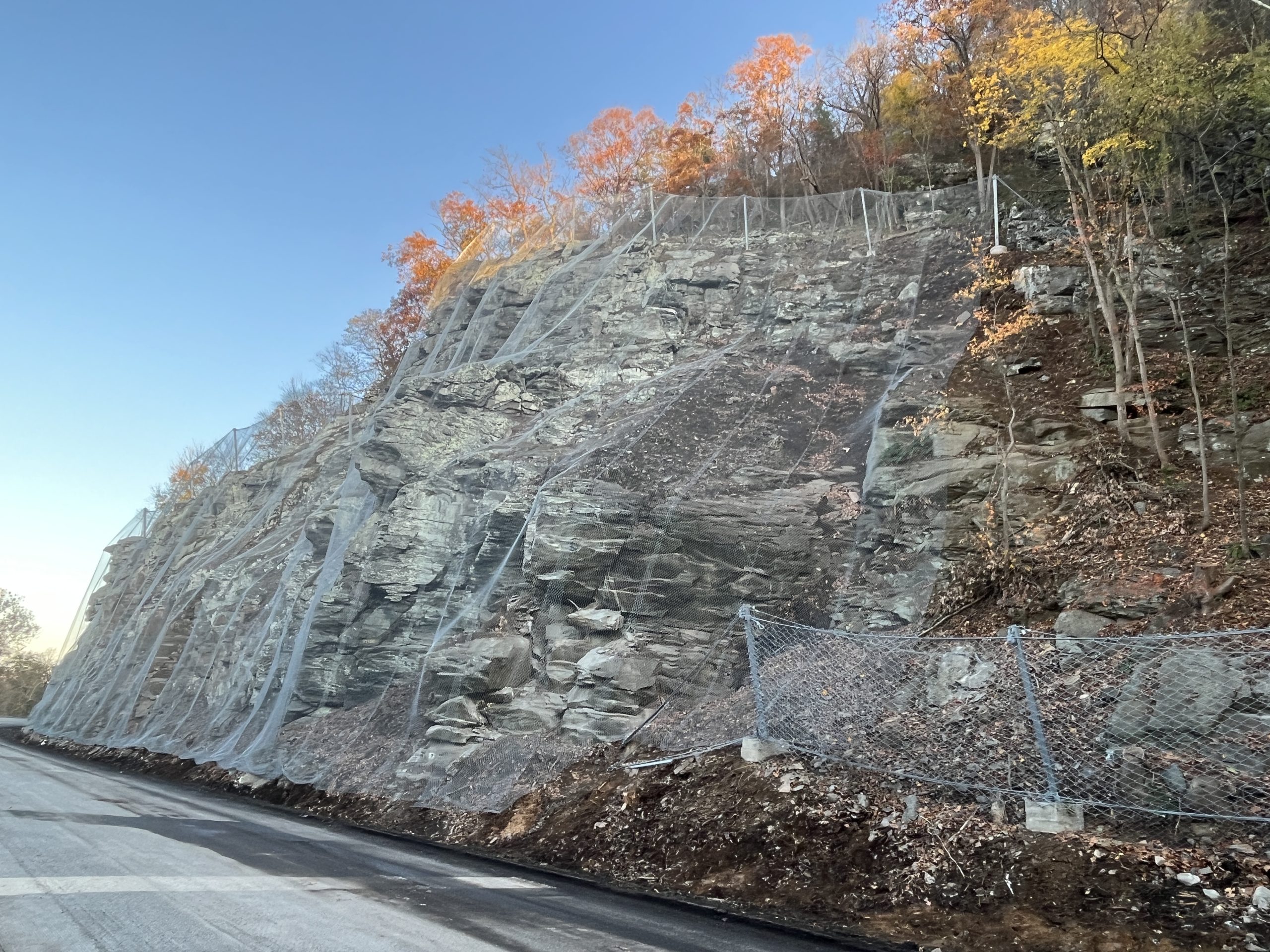






The US 340 Rockfall Mitigation project, situated in Jefferson County, WV, tackled critical rockfall challenges within the Loudoun Heights region of Harper’s Ferry National Historical Park. This crucial 2-lane corridor, accommodating over 24,000 vehicles per day, serves as a lifeline for local commuters, truck traffic, and travelers from West Virginia, Virginia, and Maryland. However, the area's rugged terrain, characterized by cut slopes dating back to 1950s construction and natural erosion along the Shenandoah River, poses significant hazards to public safety. Continuous maintenance efforts by the West Virginia Division of Transportation (WVDOT) underscore the urgent need for comprehensive mitigation measures.
Additionally, the presence of a trail network and overlook at the top of the slope, accessible from the Appalachian Trail, adds to the project's complexity. Collaboration among WVDOT, VDOT, MDOT, FHWA, and NPS played a pivotal role in the planning and execution of the project, which necessitated a 22-mile detour impacting routes in both West Virginia and Virginia, as well as traffic flows into Maryland.
Access Limited joined forces with Triton Construction, WVDOT, the engineering firm serving as WVDOT’s engineer of record, WVDOT’s inspection team, and Infinite Consulting to implement comprehensive rockfall protection and stabilization measures. Access Limited’s expertise encompassed safety and maintenance scaling techniques, alongside the construction of advanced rockfall protection systems provided by GeoBrugg North America LLC. Teaming up with Infinite Engineering, LLC, Access Limited finalized the design of rockfall systems, strategically deploying solutions such as rockfall slope drape, rockfall attenuator barriers, rockfall barriers, rock overhang removal, and localized rock bolting to stabilize slopes and mitigate potential rockfalls. Technological integration, including horizontal drain installation, added an additional layer of protection to safeguard the corridor against rockfall hazards.
The collaboration between Access Limited and Triton Construction ensured a seamless integration of geohazard expertise and construction proficiency. Access Limited’s completion of approximately half a mile of rockfall mitigation measures, reaching up to 300 feet above the roadway, complemented Triton’s efforts in resurfacing the project limits, replacing signs, and marking pavements, all accomplished within a remarkable 90-day timeframe. This concerted effort successfully mitigated rockfall risks along the vital US 340 corridor, underscoring the commitment to enhancing public safety.
Central to the project's success were the rockfall attenuators, strategically deployed to fortify the resilience of the corridor. Access Limited's meticulous implementation of rockfall attenuator barriers, along with other advanced protection systems, ensured robust defense mechanisms against potential rockfalls.
Rockfall attenuators are specialized structures designed to mitigate the impact of falling rocks and debris in areas prone to rockfall hazards. These systems typically consist of barriers or nets strategically positioned along slopes to intercept and absorb the energy of falling rocks, thereby reducing the velocity and potential damage they may cause. Rockfall attenuators are constructed using a variety of materials, including steel cables, mesh nets, and concrete elements, depending on the specific requirements of the site. By effectively dissipating the kinetic energy of falling rocks, these attenuators help to protect infrastructure, roadways, and nearby structures, enhancing safety for motorists and pedestrians alike.